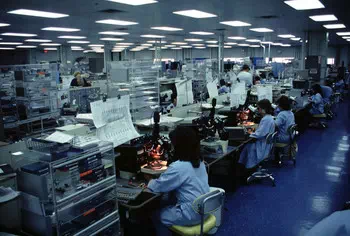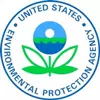 Laboratory Chemicals
Laboratory Chemicals
Healthcare and research laboratories use numerous hazardous materials, including chemicals and biological agents that present potential hazards to workers, patients, the public and the environment. These can be broadly grouped as follows:
- Chemical hazards: toxins, corrosives, flammables, reactives and radioactives
- Biological hazards: microbes, animals, plants, and genetically modified agents.
While these materials may be beneficially used in laboratories, they may also have the capacity to cause inadvertent damage to people (both to those using them and to bystanders exposed to them), and to other creatures and objects in the environment. It is advisable to know what to look for when purchasing or specifying laboratory chemicals, and what to watch out for when using them.
Thousands of medical and diagnostic tests and services are performed on a daily basis, even in small labs serving healthcare facilities. These services can include:
- hematology
- microbiology
- chemistry
- blood bank
- surgical pathology
- histology
The functions of laboratory testing are highly varied, and involve a number of separate processes. Labs use large volumes of a few chemicals (e.g., xylene, alcohol, formalin) and small quantities of a large number of other substances. Labs tend to expend many of the chemicals used in testing through evaporation or dilution and disposal to the sanitary sewer. Both air and water emissions are of concern. Larger quantities of some chemicals may be collected for disposal, or in some cases may be reprocessed for reuse within the lab.
Although nearly any chemical could potentially be found in a healthcare or research laboratory, some are more commonly found:
- Disinfecting equipment and materials are important to the accuracy of lab functions, so a range of disinfecting solutions is often found in labs.
- Many labs have automated chemical analyzer systems. These systems contain many reagent reservoirs and reagents with preservatives.
- Common solvents used in the laboratory include xylene, ethanol, toluene, and methanol.
- Sodium azide is often used as a preservative in a variety of laboratory reagents usually at concentrations of less than 0.1%.
- A range of mercury-containing devices in labs is still not uncommon, sometimes due to the age of equipment or interpretation of laboratory accreditation standards that require mercury calibration equipment.
- Radioactive materials are generated in nuclear medicine and clinical testing laboratory departments.
The laboratory environment is a hazardous place to work. Walk through any laboratory door and you are confronted with a wide array of chemicals, biologics, and instrumentation. Nearly every common laboratory technique, practice, or procedure carries some risk of exposure. Also, there are many possible routes of exposure to consider (e.g., fugitive air emissions, splashing, sharps, radioactive materials).
Various resources are available to access risks posed by laboratory hazardous materials. One such source is The Howard Hughes Medical Institute, which has collaborated with the National Academy of Sciences in making their Laboratory Chemical Safety Summaries (LCSSs) available on the web. This resource includes 88 LCSSs prepared by the National Research Council, Committee on Prudent Practices for Handling, Storage, and Disposal of Chemicals in Laboratories.
Certain Occupational Safety and Health Administration (OSHA) regulations apply to hazardous materials in the laboratory:
- OSHA's Hazard Communication Standard (HazCom), requires
that information concerning any associated health or physical hazards be
transmitted to employees via comprehensive hazard communication programs
(See the HazCom page). The programs
must include:
- Written Program. A written that meets the requirements of the Hazard Communication Standard (HazCom).
- Labels. In-plant containers of hazardous chemicals must be labeled, tagged, or marked with the identity of the material and appropriate hazard warnings.
- Material Safety Data Sheets. Employers must have an MSDS for each hazardous chemical which they use and MSDSs must be readily accessible to employees when they are in their work areas during their workshifts.
- Employee Information and Training. Each employee who may be “exposed” to hazardous chemicals when working must be provided information and be trained prior to initial assignment to work with a hazardous chemical, and whenever the hazard changes.
- OSHA sets permissible exposure limits (PELs) to protect workers against the health effects of exposure to hazardous substances. PELs are regulatory limits on the amount or concentration of a substance in the air. They may also contain a skin designation. Currently, approximately 500 PELs have been established (e.g., benzene, carbon disulfide, carbon tetrachloride, formaldehyde). To meet PELs facilities may implement various strategies including engineering controls (e.g., fume hood) and/or personal protective equipment.
Certain Environmental Protection Agency (EPA) regulations may also apply to laboratory chemicals:
- The Federal Insecticide, Fungicide and Rodenticide Act (FIFRA) provides EPA with the authority to oversee the registration, distribution, sale and use of pesticides. FIFRA applies to all types of pesticides, including antimicrobials, which includes disinfectants and other cleaning compounds that are intended to control microorganisms on surfaces. FIFRA requires users of products to follow the labeling directions on each product explicitly. (see FIFRA page)
- Discarded laboratory chemicals may be a hazardous waste due to its corrosiveness, flammability, toxicity, or reactivity. Hazardous wastes are regulated under the Resource Conservation and Recovery Act (RCRA). RCRA specifies rules for hazardous waste generators based on the quantity of waste generated per calendar month. Therefore, a store room or laboratory cleanout might push it into a higher category. For information on how to properly identify your hazardous waste, please see HERC’s Hazardous Waste Determination page. You should also check the HERC Hazardous Waste State Resource Locator page for your state for links to any state-specific variations on the federal rules that may apply to you.
- When hazardous wastes are generated and accumulated in the laboratory, the facility must follow the rules for satellite accumulation. Satellite accumulation provisions allow generators to accumulate up to 55 gallons of hazardous waste (or 1 quart of acute hazardous waste) in containers under certain conditions. These rules vary depending on generator status.
The following pollution prevention measures will minimize the quantity of hazardous waste generated by your laboratory (source: Pollution Prevention Measures for Safer School Laboratories, EPA 908-F-06-002).
Chemical purchasing. Careful consideration should be given to purchasing chemicals for your laboratory to avoid common problem chemicals and excess stocks.
- If possible, centralize purchasing of your chemicals through one person.
- Create an authorized use list of those chemicals that can be purchased in the laboratory.
- Develop purchase guidelines, which include buying chemicals in the smallest quantities needed, or only a one to two-year supply.
- Select a chemical supplier who can deliver small amounts of chemicals and accept unopened chemicals that are returned, thereby supporting waste minimization efforts.
- Purchasing and using non-mercury-containing fixatives in the laboratory and technologies for vital sign monitoring (thermometers and sphygmomanometers) help to reduce mercury pollution.
- Remember that a chemical’s true cost includes the purchase price plus the cost of proper disposal.
Maintain a chemical inventory. Inventories enable you to determine the existence of a specific chemical, its location, and approximate shelf age, thus helping to control the hazards in your laboratory.
- Maintain a complete and current inventory of all chemicals, including location, chemical names, amounts, and dates of entrance to your laboratory
- Update the inventory when chemicals are purchased or used up, and inventory your entire stock at least once a year
- Establish a policy for restricting the acceptance of donated chemicals unless they meet a specific need during a defined period of time (preferably within a year)
- If your regulatory authority has a list of prohibited and or restricted chemicals, ensure that these materials are not purchased
- Consider obtaining needed chemicals from another laboratory that may not need them or has them in excess
- Ensure your chemical supplier provides you an MSDS for every chemical that is purchased, and that it is maintained in the laboratory files
Storing chemicals. By understanding and following these guidelines and precautions, you can ensure that your laboratory’s chemical storage area is safe for use.
- Designate a safe and secure area for chemical storage. This will provide an area that reduces the risks of breakage and spills. It is recommended that the storage area be ventilated, locked, and fire-resistant.
- Limit access to your chemical storage areas to authorized personnel only.
- Keep chemicals in the storage area except when in use.
- Keep chemical storage areas clean and orderly at all times.
- Post signs for hazardous chemical storage.
- Store chemicals in containers designed for chemical storage and appropriate for each type of chemical; ensure that lids are tight.
- Label all chemicals to assure proper identification.
- Store chemicals at or below eye level.
- Store chemicals by chemical group (chemical class/reactive
group) to keep incompatible chemicals away from each other. Make sure your
organization ensures vertical and horizontal compatibility, as well as
compliance with the local fire code. Appropriate measures may include separation
by shelving, and or the use of secondary containment such as clean tubs,
buckets, and trays. The following provides some general guidelines for
storage:
- Keep acids separate from bases
- Keep organic acids separate from inorganic acids (nitric acid from formic acid, acetic acid, and anhydrides)
- Keep ignitables separate from oxidizers or sources of ignition, especially solvents
- Keep flammable liquids separate from corrosives (except acetic acid – store with flammables)
- Keep pyrophorics separate from flammables and corrosives
- Keep oxidizing agents separate from reducing agents
- Keep halogenated solvents separate from non-halogenated solvents
- Keep water reactives separate from aqueous sources
- Check chemical containers for the formation of peroxides. In glass bottles, peroxides may be visible as distinct crystals; in metal cans, particularly deteriorating ones, peroxidation should be presumed. These materials are highly explosive, and should be handled with extreme caution by qualified individuals, such as fire department personnel. Peroxide-forming chemicals should be stored in sealed, airtight containers with tight-fitting caps, and checked periodically for peroxide formation.
- Do not use standard refrigerators to store flammable chemicals; only refrigerators of explosion-proof or explosion-safe design should be used.
- Do not store food in chemical-containing refrigerators; label these refrigerators with signs that say “no food allowed.”
- Keep current material safety data sheets (MSDSs) for every chemical that is being stored in order to understand storage requirements, hazardous characteristics, and health and safety information.
- Follow instructions for recommended shelf-lives of chemicals, since chemicals can become more hazardous with age.
- Eliminate from storage all chemicals that are beyond their shelf life, that are unusable, unneeded, deteriorated, and or excess.
- Check chemical containers periodically for rust, corrosion, and leakage.
Reducing the amount of hazardous waste you produce will be the most economical and environmentally sound approach to minimizing the requirements that apply to your laboratory. For more information, see the Alternatives section.
Hazardous wastes generated in the laboratory must be properly disposed of:
- hazardous wastes cannot be disposed into drains
- hazardous waste, such as solvent, cannot disposed of by evaporation into the air or into a fume hood
- hazardous wastes such as partially full aerosol cans and mercury amalgam contaminated materials cannot be disposed of in regular trash
Disposal of hazardous wastes should be coordinated with your EH&S department. The following instructions are general guidelines applicable to laboratories. Similar procedures should be implemented by your healthcare facility:
- Hazardous waste may be accumulated in laboratories as long as they are collected in containers near the point of generation. This area must be under the control of the lab workers and the laboratory manager. In short, this means that waste containers must remain in the lab where they were filled, until authorized personnel come to collect. Authorized personnel generally means members of your EH&S department.
- A laboratory may accumulate (i.e., satellite accumulation) up to 55 gallons of hazardous waste, or one quart of "P-listed" waste. If a lab accumulates more than these limits, it has three days to have the excess removed to a central hazardous waste storage area.
- Containers must be in good condition.
- Container material must be compatible with the waste they contain.
- Containers must remain closed, unless adding or removing waste.
- Containers must be labeled as "Hazardous Waste" and the components must be listed. The list of contents must be updated whenever waste is added.
- All chemical waste must be labeled with a Hazardous Waste Label.
- All information requested on the waste label must be properly completed.
For more information, see Shipping Waste Off-Site.
RCRA/Hazardous Waste Resource Locator. The rules for managing hazardous waste can vary from state to state. Find your state's regulations, along with permit forms, guidance, contact information and other helpful resources.
National Research Council Recommendations Concerning Chemical Hygiene in Laboratories (Non-Mandatory) - 1910.1450 App A (Non-Mandatory) - 1910.1450 App A. Useful guidance for development of an appropriate laboratory Chemical Hygiene Plan
Chemical Laboratory Safety Hazards. Dartmouth College presents a useful discussion of various types of safety hazards.
Environmental Management Guide for Small Laboratories, EPA 233-B-00-001, May 2000, EPA 233-B-00-001, May 2000. This guide is designed to help staff in small labs better understand their responsibility for good environmental management.
Good Laboratory Practice Standards, 40 CFR 160. This part of the code of Federal Regulations (CFR) prescribes good laboratory practices for conducting studies that support or are intended to support applications for research or marketing permits for pesticide products regulated by the EPA. However, the recommendations it contains are applicable to a wide range of laboratories.
Clinical Laboratory Wastes. A discussion of chemicals used in healthcare laboratories that must be managed for disposal.



